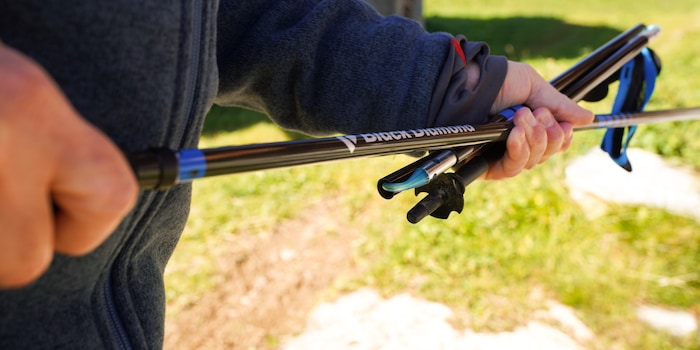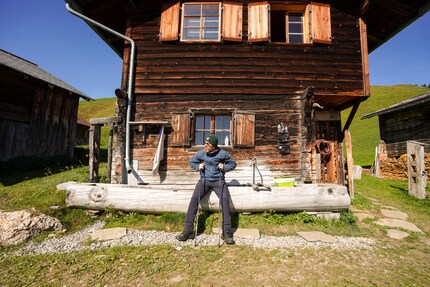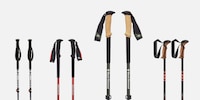

I walk on a stick voluntarily
Who needs walking poles? I used to think so. Recently I realised: I do.
Now the time has come. I use hiking poles when hiking in challenging terrain. I used to secretly turn up my nose when someone came towards me in the mountains with these toothpicks. I thought they were a superfluous frill. Now I'm smarter. The German "TÜV SÜD" has calculated that with poles, your knees have to absorb around a tonne less weight on average during a three-hour tour. So I pack these in my rucksack for a short trip to the mountains, along with many other things:

On the slope
For a reportage I accompany some hunters on the Grisons high hunt. We are travelling in the Piz Beverin area in the central Grisons. It's either up or down. Flat straight ahead is apparently unknown here. Up, down. Up, down. Up, down. My knees are aching - I think of the tyre inspection report - and I unpack my hiking poles.
The "Distance Carbon Z" from Black Diamond are lightweight, three-part folding poles made from carbon fibre. The joints are reinforced with aluminium rings so that they can withstand high loads. Thanks to the tapered connecting links and the Kevlar cord inside, you can quickly fix the poles in place or divide them into a small pack size for your rucksack. The formula for the optimum length setting is: body height in centimetres x 0.68 = pole length. At 1 metre 80, this means a good 120 centimetres.
My impression
The use of poles relieves my muscles, while at the same time training my upper body and arm muscles. The Distance Carbon Z are light, handy and yet stable. They take the strain off my knees, especially on steep descents. I'm glad I have them with me. Always on hikes from now on.

Want more of the old bag on a stick? Then grab your rollator and make your way to my author profile.
From radio journalist to product tester and storyteller, jogger to gravel bike novice and fitness enthusiast with barbells and dumbbells. I'm excited to see where the journey'll take me next.



